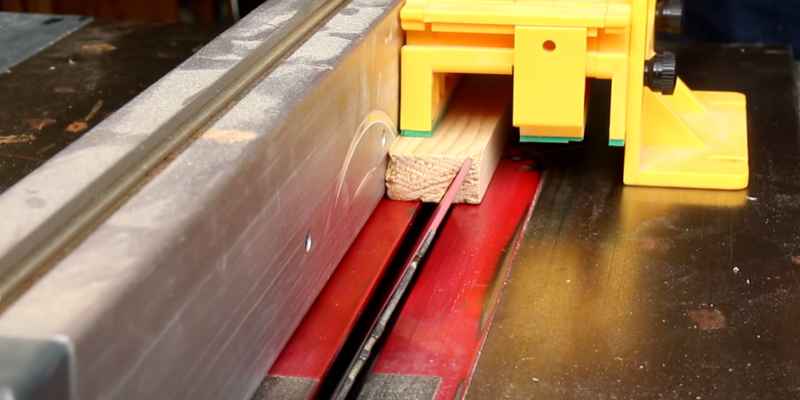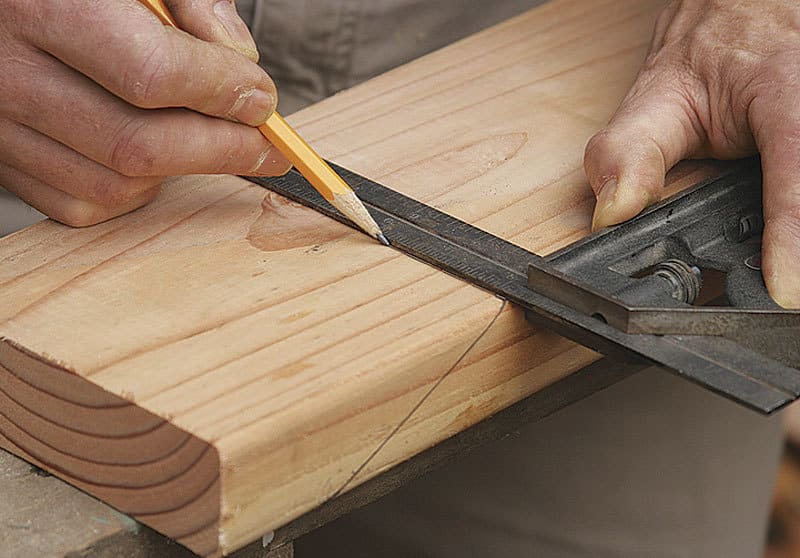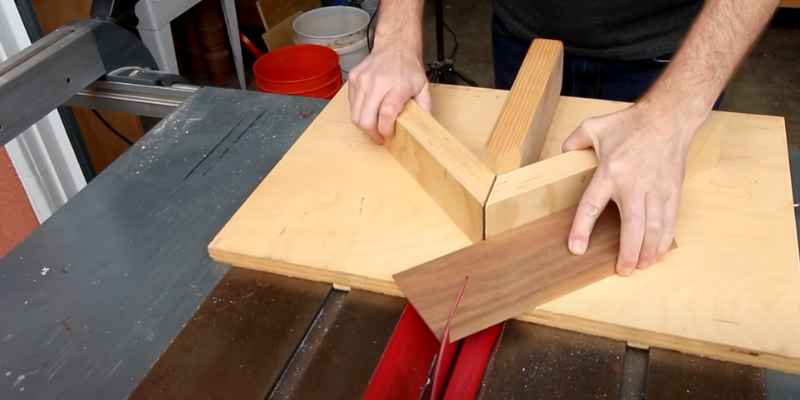There are a few different ways that you can bevel wood. The most common way is to use a power tool, such as a router or sander. You can also use hand tools, such as a chisel or rasp.
Whichever method you choose, the goal is to create an angled surface on the edge of the wood. Beveling wood is often used for decorative purposes, such as adding detail to furniture or creating picture frames. It can also be functional when you need to create a sloped surface for rainwater runoff.
The process is relatively simple no matter what your reason for beveling wood.
- Start by creating a 45-degree angle cut on the wood
- Next, use a hand sander to smooth out the rough edges of the wood
- Once the advantages are nice and smooth, use a router to create a beveled edge on the wood.
- Finally, finish up by sanding down the beveled edge with a fine-grit sandpaper.
What Tool Do You Use for Bevel Wood?
There are a few different tools that can be used to bevel wood, but the most common is probably a router. A router is a tool that can be used to create a variety of different shapes and edges on wood, and it’s relatively easy to use once you get the hang of it. Beveling wood with a router is simply a matter of adjusting the depth of the cut and moving the router along the edge of the wood consistently.
You can also use other tools, such as chisels or hand planes, but routers are quicker and easier.

How Do You Bevel Wood Edge by Hand?
You can bevel wood edges by hand in a few different ways. The most common way is to use a chisel. First, you will need to determine the angle at that you want your slope to be.
For most projects, a 45-degree angle is an excellent place to start. Once you have determined your desired angle, use a pencil or other marking tool to draw a line along the length of the wood you want to bevel. This will give you a guide to follow when using your chisel.
Next, place your chisel at the end of the board on the waste side of your line (the side that will be removed). Apply pressure to the chisel and push it forward along the length of the board until it reaches your drawn line. You may need to apply quite a bit of pressure, depending on how complex the wood is.
Keep pushing until you reach the other end of the board. Once you have reached the other end, look at your work. If everything looks good, then congratulations!
You have successfully beveled your first edge! If there are any imperfections, such as gouges or unevenness, go back over those areas with your chisel until they are smoothed out.
How Do You Bevel Wood With a Circular Saw?
You can bevel wood with a circular saw in a few ways. The most common way is to use a blade with a 45-degree angle. You can also use a chisel or router to create the curve.
What Does It Mean to Bevel Wood?
When most people think of woodworking, they picture straight lines and 90-degree angles. But sometimes, you want to add a little flair to your project by creating beveled edges. Beveling is cutting an angled edge onto a piece of wood.
This can be done with various tools, but the most common is a router. There are two types of bevels: 45-degree and 22.5-degree. A 45-degree slope is simply an angled cut perpendicular to the board’s face.
A 22.5-degree bevel, on the other hand, is an angled cut parallel to the board’s face. Beveling can be used for both functional and aesthetic purposes. For example, if you’re building a cabinet, you might use beveled edges on the doors and drawer fronts to give them a more finished look.
Or, if you’re making a table, you could use beveled edges on the tabletop to prevent glasses from slipping off. No matter your reason for creating beveled edges, it’s essential to know how to do it correctly, so your projeclooksng just the way you want it to!

Credit: www.sawinery.net
How to Bevel Wood by Hand
Beveling wood by hand can be a challenge, but with the right tools and techniques, it’s doable! Here are some tips on how to get started:
1. Choose the right tool for the job.
A chisel is the best option for most beveling tasks, but you may want to use a plane instead if you’re working with fragile pieces of wood.
2. Mark out your desired angle with a pencil or other marking tool. This will help you stay on track as you work.
3. Start chiseling away at the wood, following your marked line as closely as possible. Use light, even strokes to avoid gouging the wood.
4. As you get closer to the end of your cut, be careful not to over-chisel and create an uneven edge.
Test the fit of your two pieces of wood frequently to ensure they’re still lining up correctly.
5 Be sure to clean up any rough edges with sandpaper before joining your two pieces of wood together. And that’s it!
With a bit of practice, you’ll be able to master this technique and create beautiful, professional-looking joints in no time!
How to Bevel Wood With a Router
If you’re looking to add a bit of character to your woodworking projects, beveling the edges is a great way to do it. And routers are the perfect tool for the job. In this post, we’ll show you how to bevel wood with a router, step by step.
First, you’ll need to decide on the size of the angle you want. A good rule of thumb is to make the angle about 1/3 the thickness of the wood you’re working with. So if you’re working with a 3/4″ thick piece of wood, a 1/4″ bevel would be ideal.
Once you’ve decided on the size of your angle, it’s time to set up your router. Most routers have an adjustable depth stop, which will come in handy here. Set the depth stop so your router will only cut as deep as necessary to create your desired angle.
Now it’s time to start cutting! Begin by routing along one edge of your workpiece, keeping the router flush against the side (this will ensure an even cut). When you reach the end of your workpiece, lift the router and move over slightly so that you can make another pass without overlapping your first pass.
Continue making passes until you’ve gone all around your workpiece’s edge and achieved a consistent bevel all around. And that’s all there is to it! Be sure to practice on some scrap wood before moving on to your actual project piece, and always use caution when operating power tools like routers.
But once you get comfortable with this technique, there’s no limit to what kinds of creative projects you can add those beautifully beveled edges too!
How to Bevel Wood With a Dremel
Beveling is an excellent option if you want to add a bit of dimension and style to your woodworking projects. And with a Dremel rotary tool, it’s easy to do! This tutorial will show you how to use your Dremel to create perfect angles on any wood.
The first step is to decide on the angle of your slope. For most projects, a 45-degree tip will suffice. But if you’re working on something more intricate, you may want to experiment with smaller or larger angles.
Once you’ve settled on an angle, it’s time to start. To begin, clamp your workpiece, so it does, isn’t move around while you’re working. Then, attach the appropriate Dremel bit for the job – we recommend using a carbide router bit for best results.
Now guide your Dremel along the edge of the wood at your chosen angle until you’ve achieved the desired depth and width of the slope. And that’s all there is to it! Beveling is a quick and easy way to add interest and dimension to any woodworking project.
With a bit of practice, you’ll be creating beautifully beveled edges in no time!
How to Make a Bevel Cut
Making a bevel cut is a great way to add interest and dimension to your projects. Whether you’re working with wood, metal, or another material, there are a few things you’ll need to keep in mind to get the perfect cut. First, you’ll need to decide on the angle of your bevel cut.
This will determine the amount of material removed from your piece. A joint angle for bevel cuts is 45 degrees, but you can experiment with different angles to see what looks best for your project. Once you’ve decided on a slope, it’s time to mark out the area that you’ll be cutting.
Use a ruler or other straight edge to draw a line along the length of your piece at the desired angle. Then, use a saw or other cutting tool to follow this line and make your cut. If you’re working with wood, you may want to smooth out the edges of your bevel cut with sandpaper before finishing your project.
Once your cut is complete, you may not need additional finishing steps for metal or other materials. Bevel cuts are a simple yet effective way to add interest and dimension to your work. By keeping a few key points in mind, you can create beautiful cuts that will take your projects to the next level!
What is a Bevel Cut
Abel cut is a type of cut where the edge of the material is not perpendicular to the surface. The slope angle can vary depending on the desired look or functionality. Bevel cuts are commonly seen in woodworking, metalworking, and glassworking.
When cutting metals, a bevel cut is often used to create a clean edge for welding. Glassworkers will use bevel cuts to create polished edges on stained glass pieces. Bevel amounts are often used in woodworking to create decorative moldings and trims.
How to Bevel Wood With a Miter Saw
If you want to add a decorative touch to your woodworking project, beveling the edges is a great way to do it. And using a miter saw is the easiest way to get nice, clean cuts. Here’s how to do it:
1. Set up your miter saw according to the manufacturer’s instructions. Make sure the blade is aligned correctly and tightened before proceeding.
2. Place the piece of wood on the saw table with the edge you want to bevel facing up.
3. Adjust the blade angle to create the desired bevel cut. For most projects, a 45-degree angle will suffice.
4. Slowly and carefully guide the wood through the blade, keeping your hands away from the cutting area.
Let the weight of the wood dictate the speed at which it moves through – there’s no need to force it.
Bevel Wood Edge Tool
A bevel-edge tool creates a beveled or chamfered edge on wood. This type of edge is commonly found on furniture and cabinetry and can add a touch of elegance to any project. Many different types of bevel-edge tools are available, but they all work similarly.
The tool is passed over the surface of the wood at the desired angle, leaving behind a clean, smooth edge. Beveling edges is not tricky, but it does require some practice to get perfect results. It’s essential to take your time and work slowly and carefully.
With a bit of practice, you’ll be able to create beautifully beveled edges that will add a touch of class to any project!

How to Make a Bevel Cut With a Handsaw
Assuming you would like a blog post discussing how to make an angle cut with a handsaw: One of the most basic cuts you can make with a saw is a bevel cut. Bevel cuts are angled and often used to create joints between two pieces of wood at an angle.
While you can use a power saw to make bevel cuts, it’s just as easy (if not easier) to do it by hand. Here’s how: First, you’ll need to find the center point of the board you’re working with.
To do this, measure half the width of the board and mark it with a pencil. Next, draw a line from that mark to one end of the board. This will be your reference line for making your bevel cut.
Now it’s time to get your handsaw set up for cutting. First, adjust the blade so that it is perpendicular to the handle – in other words, at a 90-degree angle. Next, open up the jaws of the saw so that they form an “L” shape when viewed from above; this will give you more control over the saw while you’re cutting.
Finally, tighten both screws on either side of the blade; these screws hold the edge in place and keep it from moving around while you cut. With your saw set up and ready to go, position yourself so that you are comfortable and have good posture; this will help prevent fatigue while you’re cutting. Then, align the blade of your saw with your reference line and start cutting along that line at a slow and steady pace; don’t force the edge through the wood – let gravity do its job and guide the edge down into (and then through) the wood grain.
When using any power tool or sharp implement: use caution!
Conclusion
There are a few different ways that you can bevel wood. The most common way is to use a hand plane. You can also use a power tool like a router or sander.
If you want to create a decorative edge, you can use a chisel. Beveling wood is an easy way to add interest to any project. It’s a simple technique that anyone can learn with practice.
With the right tools, it’s quick and easy to get great results.


